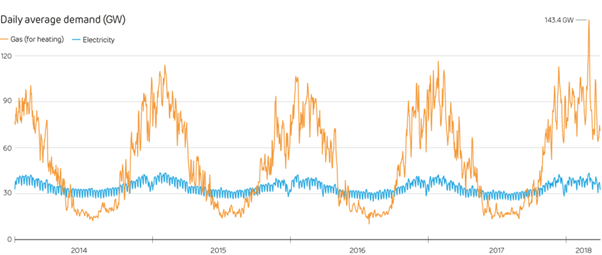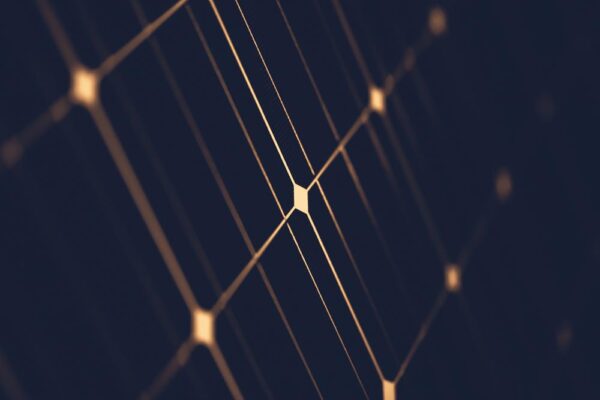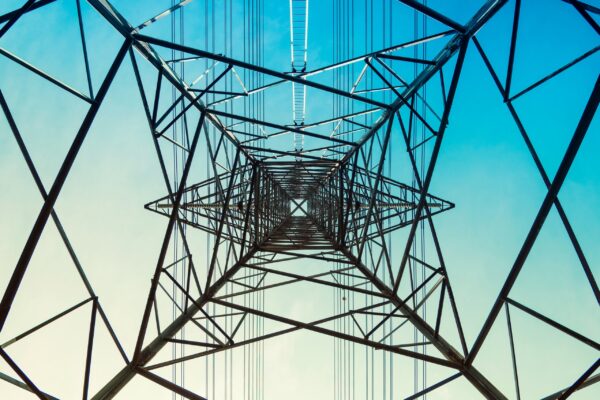
This November the UK hosts the COP26 summit bringing together world leaders to accelerate action towards the goals of the Paris Agreement – net-zero emissions by 2050 and a limit to the average global temperature rise of +1.5C. The UK is leading ‘developed’ nations towards this goal, having reduced CO2 emissions in 2020 by 46.4% compared to 1990 levels.


Figure 1. Total annual UK CO2 emissions in 1990 (left) compared with 2020 (right). Source: gov.uk
Over thirty years have passed since 1990 though and we now have less than 30 years to reduce all remaining carbon emissions to net-zero. The bad news is, it’s going to be more difficult. Why? Well, the reductions to date are mainly due to the removal of coal as a fuel for power generation, a consequence of carbon taxation that made its usage too expensive. The solutions to the remaining carbon emissions are going to be more incremental, more numerous and more complex.
In this article we explore the future of energy and the technologies that could help achieve our net-zero goal while recognising that other changes such as policy, regulation, security of supply, seasonal (long-term) energy storage and behavioural change will also be needed.
First we look at efficiency – there’s no better way to reduce carbon emissions than avoiding the production of them in the first place. Second, we consider energy generation and how you can support renewable generation either on your site premises or through your supply contract. Finally, we conclude with energy storage options, some of which could earn your business an additional income stream.
Energy efficiency
After energy supply and transport, the third largest carbon emitters are residential and public sector properties, accounting for 23.2% of the UK’s CO2 emissions. With soaring gas prices and leaky housing stock, there’s never been a better time to explore energy efficiency in our buildings.
Insulation
UK properties are still missing out on a potential 50% reduction in heat loss that BEIS highlights is possible with proper retrofitting measures. Through a number of government schemes, grants are available to provide adequate loft, cavity wall and floor insulation, as well as improved windows and doors airtightness.
Loft insulation – A quarter of heat is lost through the roof of an uninsulated building. To mitigate this there are wide range of materials available to use, the most common being fibreglass. Fibreglass uses 40-60% recycled glass content, but alternatives go further in helping our environment. Mineral wool uses on average three-quarters post-industrial recycled content such as slag wool, and another alternative, cellulose insulation, uses over 80% recycled paper products. Similarly, natural substitutes like recycled cotton, sheep’s wool, and straw are also viable options. Installation of up to 270mm of insulation can significantly reduce bills and return on investment is quite quick (1 to 2 years depending on the building).
Wall insulation – Walls are often the largest surface area between the outside and the inside of our building and therefore a crucial to improving efficiency. In addition to the above-mentioned materials, expanding foam can be injected into cavity external walls to increase insulation levels. But where buildings lack a cavity, measures must instead be taken internally and/or externally to ensure insulation is added. Internally, insulative plastering can be applied to the walls as well as thermal wallpaper. Externally, similar solutions are available such as fixing insulated panels to the exterior using a plastering mix and completed with a decorative finish. Dry cladding such as timber, stone, or aluminium panels also provide a ‘building envelope’ solution that is more easily used on larger scale projects like office buildings or warehouses.
Floor insulation – Many floors have cavities and/or are poorly insulated, so installing insulation can help to reduce emissions and ongoing energy costs. Further decarbonisation is possible by modifying radiator-based space heating to an underfloor heating system. These systems use a larger surface area for space heating meaning you don’t have to use high temperatures to heat the water that runs through the floor. Such installations are ideal for heat pumps which can be powered by renewably generated electricity, further eliminating carbon emissions.
Glazing – Low-emission coatings can prevent up to 95% reduction in heat loss through glazing compared to standard windows. Suspended film and vacuum insulated glass deliver double-glazing performance but with the ability to retrofit into existing frames. Advanced window frames isolate internal and external parts of the frame reducing heat transmission by up to 90% (and eliminate condensation on the frames). Ethylene Tetra Fluoro Ethylene (ETFE) used in places such as the Eden project are lightweight (1% of glass), are 100% recyclable and embody only a tenth of the energy required to make glass meaning the lifecycle carbon emissions are far smaller too. Anti-reflective coatings and self-cleaning glazing maximize light capture helping to heat buildings. Finally, adaptive glazing can tint in response to ambient light levels and can integrate with lighting and cooling systems to reduce energy use.
Generative glazing – Photovoltaic (PV) cells can be manufactured inside glazing panels and when installed can integrate with a building’s energy system to help reduce power demand from the grid. For example, Ubiquitous Energy is one company challenging the traditional opaque solar cells by creating photovoltaic glazing. Their windows absorb and convert ultraviolet and infrared waves into electricity while transmitting visible light to the interior.
Heat pumps
Heat pumps (HP) use the same principle as your refrigerator by moving heat from one place to another using the compression cycle efficiencies of a refrigerant chemical. They can be used to heat air or water but with ‘co-efficient of performance’ (COP) figures of 3 or more, the amount of heat energy generated by the HP is three times the electrical power supplied making heat pumps far more efficient than gas boilers. If powered by renewable energy, then heat pump operation is zero carbon.

Figure 2. Daily demand for gas (orange) and electricity (blue) between 2014-2018. Source: http://euanmearns.com/the-beast-from-the-east-coal-gas-and-the-uk/
Note: it is important to insulate as much as possible before moving to a heat pump to reduce energy demand to a minimum and maximise efficiency and cost reduction. Uptake of this technology has been low due to their high up-front expense, with the UK being joint last with Hungary for heat pump installations per 1000 houses in Europe.
Smart devices
Further efficiency measures can be taken through the use of smart technology, these being devices that enable a degree of automation and/or remote control. Examples include LED light bulbs that save 90% more electricity than conventional ones, thermostats that are motion sensing, and plugs that allow power output to be scheduled. Together these Internet of Things (IoT) products provide feedback on waste and cost, and with artificial intelligence can create an autonomous building energy management system that generates the optimal environment for performance and comfort.
Time of use tariffs
The introduction of ‘time of use’ tariffs that charge the consumer based on real-time energy prices increases the scope benefit of using smart technologies. For instance, on Easter Sunday 2021 there was a glut of power on the grid due to low demand and high levels of power generation from wind and solar. Energy prices actually went negative during this time meant that those consumers with a time of use tariff were paid to use the excess power – their smart devices automatically charging cars, washing clothes, cleaning dishes, etc. while earning the consumer money at the same time! In a similar way, smart devices can receive messages from the national grid to use power when prices are cheapest thereby reducing energy bills and going some way to pay off smart device investments.
Demand Side Response (DSR)
Demand Side Response (DSR) is the big brother of domestic time of use tariffs and historically has been used in large commercial and industrial settings to help balance the power grid. Through DSR, National Grid (the UK electricity grid operator) pays contributors to generate power or reduce consumption according to grid demand and operating frequency (50Hz). DSR is a cheaper, smarter alternative to centralised generation investment such as nuclear power stations, which are slow to build and questionable in their sustainable credentials. It also works hand in hand with the intermittency of renewable power and will be increasingly needed as the UK’s coal and nuclear generation is replaced by wind power in the move to make the grid zero carbon by 2035.
Electrified Transport
Electrified transport options have increased in popularity, perhaps in part due to people shying away from shared transport during the COVID pandemic and mostly probably due to ever-reducing battery costs. Electric buses and cars (hybrid, plug-in hybrid and fully electric) have historically dominated the discourse, but more recently e-bikes as well as e-scooters have seen a sales boom. There are now also retrofit kits to make a conventional bicycle electric, which could be considered a good ‘upcycling’ solution and encourages users onto bicycles instead of into cars for a relatively low cost.
Rental apps
‘Transport as a service’ apps have become widespread for self-service car rentals (Zipcar, Getaround, Hiyacar etc.), e-bikes (Lime, Jump, Wheels, etc.) and e-scooters (Voi, Spin, Tier, etc.). They are available to use in larger towns or cities and allow the rental of a vehicle when needed from a nearby location. This is seen to be helping reduce the need for ownership of the vehicle asset ultimately reducing the production and the associated embodied carbon since sharing of these assets requires fewer of them to be made overall.
In part 1, we’ve looked at the future of energy and the technologies that are paving the way for future energy developments, but in part 2 we then explore how the generation mix plays a key role in our energy future. Read on for part 2 here.
Written by Matthew Dowdswell, Innovation Manager & Declan Sheehan, Graduate at Inspired PLC.










